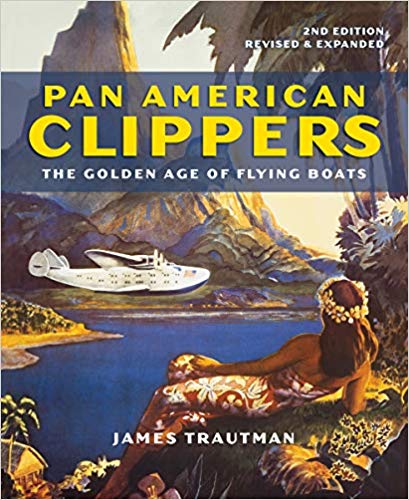
The photographs and artwork will enable readers to grasp the magnificence of the transoceanic flying boats…The accurate, authoritative text will provide information that is new to all but the exceptionally well-informed aviation buff and nonspecialist historian.”
–Choice
For a world recovering from the Great Depression, the Pan American Airways Clipper symbolized luxury, adventure and a brighter future. Illustrated with rare period photographs, vintage travel posters, magazine ads and colorful company brochures, Pan American Clippers covers all aspects of the Golden Age of Pan American’s graceful “flying boats.”
This edition has an additional 16 pages to add more historical and current information and provide additional detail and context to the historical importance of the flying boats, including:
- Pan Am’s Art Deco terminals
- the fate of the last Pan Am Clippers and where to see the survivors
- the Foynes Flying Boat Terminal, Ireland
- Trippe and Lindbergh’s groundbreaking flight to Asia by way of the Great Circle Route (Canada-Alaska-Siberia-Japan-China)
- Shediac, New Brunswick, landing site of 24 Savoia Manchetti S-55 flying boats from Rome en route to Chicago’s Century of Progress International Exposition
- Pan Am enters politics when Frank Roosevelt uses it in Latin America to sidestep the World War II Neutrality Act
- Trippe’s long-held dream of flying mail and passengers across the Atlantic Ocean to Europe, and the opening of LaGuardia Airport.
Visionary Pan Am founder Juan Trippe knew the importance of international travel to the 20th century, and his pioneering airline played a central role in the advancement of transoceanic flight, setting overseas time and distance records, providing airmail delivery and eventually as troop and cargo transports for the Allies during World War II. By dramatically reducing travel time and opening up international air travel to the general public, Pan Am Clippers forever changed the world.
This captivating, informative and richly illustrated book takes readers back to a time of glamor, romance and progress, when dreams once thought impossible were suddenly a reality.
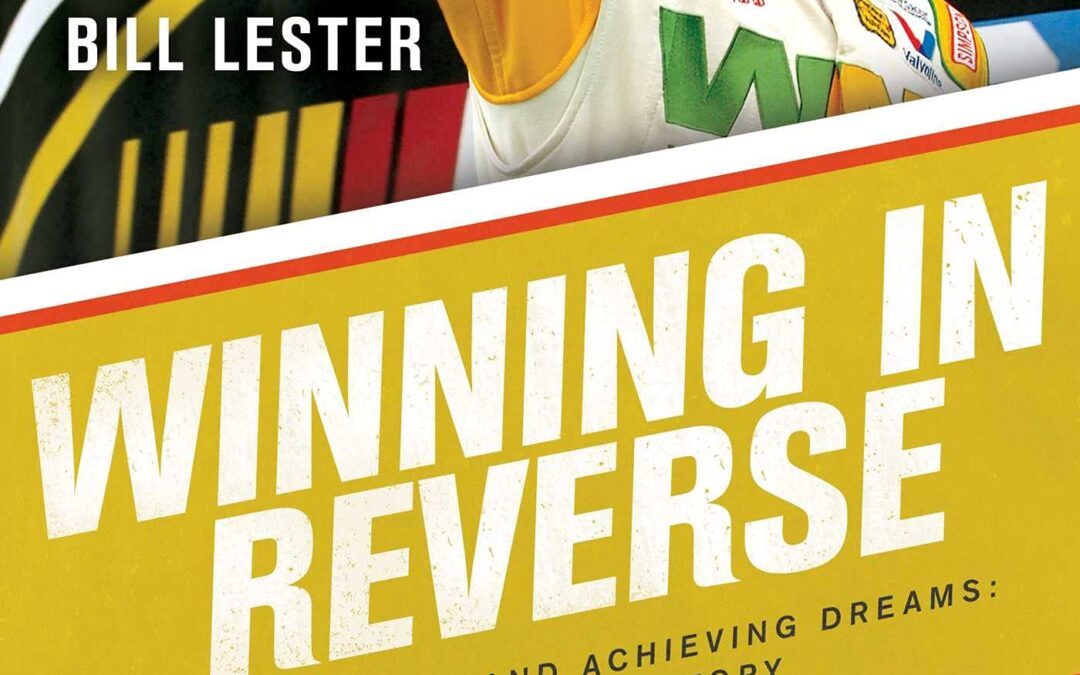
The amazing and dramatic story of Bill Lester, one of the most well-known NASCAR drivers in history—and a pioneer whose determination and spirit has paved the way for a new generation of racers.
Winning in Reverse tells the story of Bill Lester whose love for racing eventually compelled him to quit his job as an engineer to pursue racing full time. Blessed with natural talent, Bill still had a trifecta of odds against him: he was black, he was middle aged, and he wasn’t a southerner.
Bill Lester rose above it all, as did his rankings, and he made history time and time again, becoming the first African American to race in NASCAR’s Busch Series, the first to participate in the Nextel Cup and the first to win a Pole Position start in the NASCAR Craftsman Truck Series.
Whether you are contemplating a career or lifestyle change, challenging social norms, or struggling against prejudice or bigotry, Winning in Reverse is a story for sports fans and readers everywhere about the power of perseverance in the face of adversity.
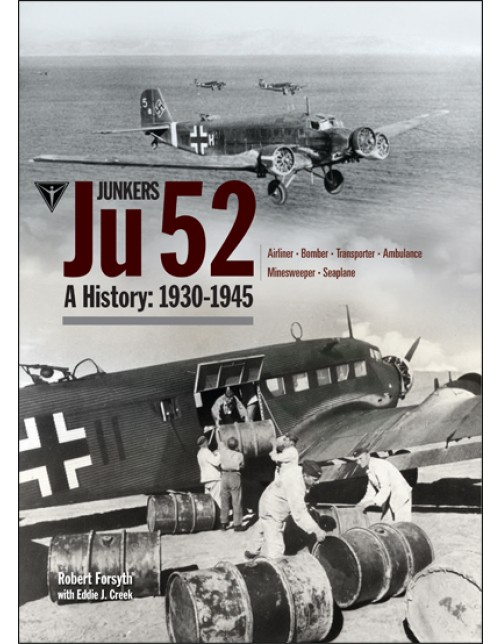
As with the other recent books in this series, this Classic study of the Ju 52 offers the most definitive account published in recent years of this bulwark of the Luftwaffe, which first saw military service in the 1930s and was then engaged in operations in the Spanish Civil War through the end of World War II.
The all-metal, three engine Ju 52/3m enjoyed a solid reputation among its crews and the troops and paratroops who used it and depended on it. It is a machine synonymous with the images of the German attacks on Holland and France in 1940 and Crete in 1941 when hundred of “Tante Jus” were used to drop paratroopers to successfully capture key tactical and strategic areas.
The full history, however, goes back much further. Built as a passenger aircraft for Deutsche Lufthansa, the Ju 52 ranges as far as South Africa, Mozambique, India and Latin America, as well being operated by several other European countries such as Belgium, Equador, Peru and Uruguay. Britain operated several Ju 52s.
The aircraft was first blooded in the Spanish Civil War, where it was pressed into service as a crude, but effective, bomber with the Legion Condor. From then on the Luftwaffe deployed it on every battle front in the West, in the Mediterranean and in the East. An example also flew in Iraq. The Ju 52 served as a stalwart transport, often operating in the most hostile conditions, with ice or dust, lifting men, animals, food, supplies, ammunition, mail, and spare parts vital for German military operations, such as the North African supply routes at Demyansk, Stalingrad and also in the Ardennes in 1944. It was also converted into the ambulance and mine-hunting roles, and was adapted as a seaplane. After the war, the Ju 52 flew on as late as the 1980s, testimony to its strength and reliability.
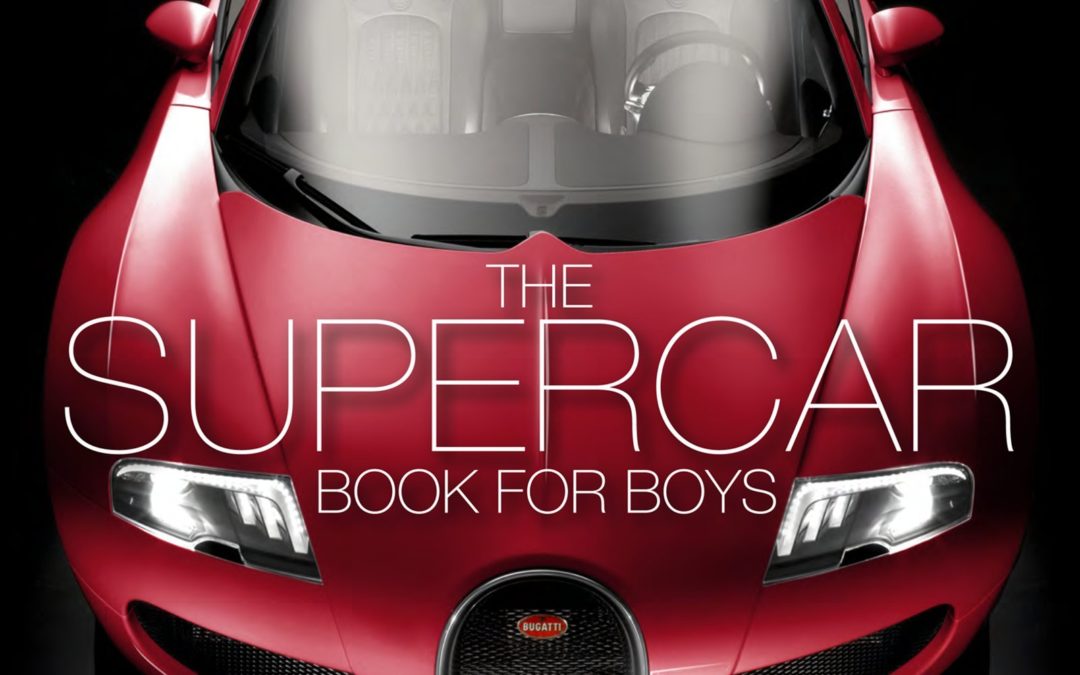
Fully illustrated throughout, The Supercar Book is a sumptuously designed guide full of everything you could ever want to know about the best supercars on the planet.
From number-one bestselling author Martin Roach, The Supercar Book is a must-have for all boys and their dads (plus petrol-head girls and mums!) interested in fast cars.
With an introduction from F1 racing legend David Coulthard, as well as contributions from the biggest names in the field, this tour de force starts with the iconic 1954 Mercedes Gullwing and races through each respective decade of supercar history, showcasing the very best and most important vehicles in this scintillating species. Featuring the landmark 10 game-changers that have defined the genre and highlighting dozens and dozens of supreme supercars from the likes of Ferrari, Lamborghini, Bugatti, Pagani, McLaren and Porsche, get ready to be blown away by the beauty and power of these incredible vehicles.
With a pre-history of the genre plus an excursion into American muscle cars, this comprehensive book takes us underneath the bonnets and peels back the bodywork of these mind-blowing machines, as well as exploring how supercar technology has affected everyday cars.
The Supercar Book is a tour de force of the fastest, the most powerful and the most drop-dead gorgeous vehicles in supercar history. Jam-packed with almost 200 full-colour photographs, awe-inspiring statistics and exclusive interviews with supercar experts, and featuring every landmark star of the genre, this book is the ultimate guide for every supercar fanatic.
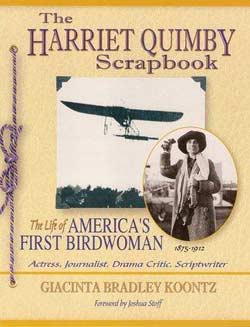
This first complete biography of Harriet Quimby is visually charming for all ages and a handy reference for entertainment, photography, travel, and aviation historians. With over 150 vintage newspaper clips and dozens of never before published photographs, it’s a must for every fan of early aviation.
Carrie Vanderbilt’s pictures of her best friend, Harriet Quimby, remained in storage for over 85 years. These photographs and dozens of other never-before published images are artfully presented with vintage newspaper clippings and Quimby family documents, as if Quimby had pasted them into her own scrapbook. Reprinted for the first time are Harriet Quimby’s seven silent film treatments for American Biograph.
Quimby was disarmingly unique. Ignoring criticism, and creating her own sense of style, she owned several cars, learned how to repair them, and encouraged other women to do the same. She smoked cigarettes, lived alone, and lied about her age. Cleverly calculating her professional career, she represented all that was independent and modern, yet she distanced herself from feminist causes.
Harriet Quimby’s life touched the fringes of the Civil War, the Industrial Revolution, the Ragtime Ear, and the new Age of Aviation. Moving from Michigan to California and finally to New York City during 1903, she was prepared to take it by storm. She had no alternate plan.
New York loved her. America admired her. The world was her oyster until tragedy struck. Before her death at age 37, her potential for continued fame, fortune, and contributions to U.S. history was limitless.
Scientific American eulogized that her death, ” while fitting for an athlete, should never have been the lot of such a fragile flower of sunny California.”.
This scrapbook represents more than the life of one woman. It is our cultural heritage.

Welcome to Cuba’s automotive time capsule, filled with classic cars.
The story of how Cuba came to be trapped in automotive time is a fascinating one. For decades, the island country had enjoyed healthy tourism trade and American outpost status, and by the 1950s it had the highest per capita automotive purchasing of any Latin American country – its middle class ensured an interesting variety of vehicles plying the roads. But when Cuba fell to communist rebels in 1959, so ended the inflow of new cars. Since then, trade embargo forced Cuba’s car enthusiasts to develop a unique and insular culture, one marked by great creativity, such as:
Keeping a car alive with no opportunity to acquire replacement parts
Customizing a car with no access to aftermarket parts
Drag racing with no drag strip
In many ways, Cuba is an automotive time warp, where the newest car is a 1959 Chevy or perhaps one of the Soviet Ladas. Cuba’s Car Culture offers an inside look at a unique car culture, populated with cars that have been cut off from the world so long that they’ve morphed into something else in the spirit of automotive survival.
Authors Tom Cotter and Bill Warner (founder of the Amelia Island Concours) take readers of Cuba’s Car Culture on a whirlwind tour of all things automotive, beginning with Cuba’s pre-Castro car and racing history and bringing us up to today’s lost collector cars, street racing, and the challenges of keeping decades-old cars on the road. The book is illustrated throughout with rare historical photos as well as contemporary photos of Cuba’s current car scene. For anyone who enjoys classic cars, from old Chevy Bel-Airs to Studebakers to Ford Fairlanes, a cruise around Cuba will make you feel like a kid in a candy store.
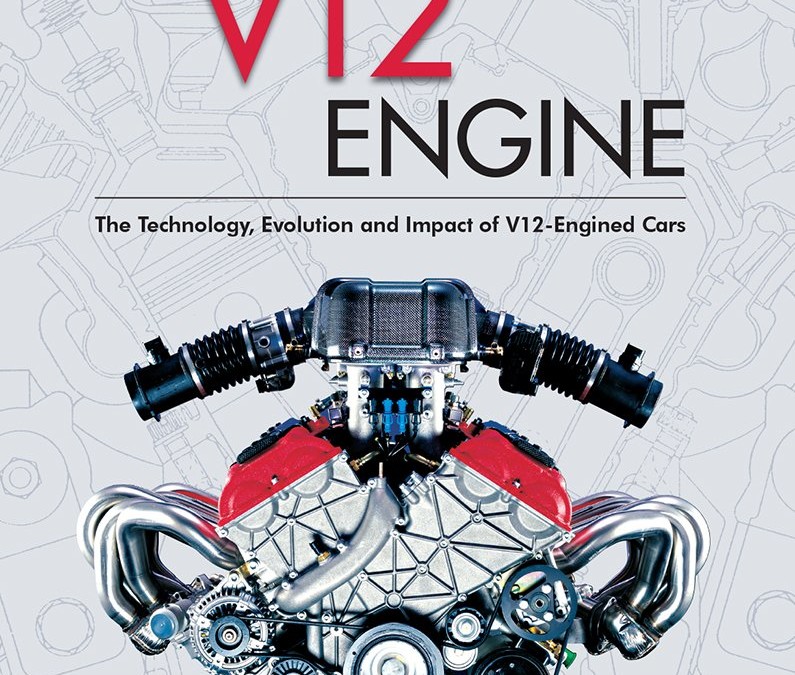
The V12 Engine gives an unprecedented and in-depth overview of the significant and important V12-powered cars and the magnificent engines that powered them, from the smallest, the 1.1-litre Itala of 1926, to the largest, the 112-litre “Quad Al” of 1965 powered by four Allison twelves.
Karl Ludvigsen, award-winnng automotive historian and author of the acclaimed Porsche: Origin of the Species takes the reader behind the scenes of the creation of the greatest twelves of all time, from the effortless urge of the luxurious Hispano-Suiza of the 1930s to the scintillating surge of the Lamborghini supercars of the 1960s. You’re trackside at the epic battles of Grand Prix twelves in the 1930s and 1990s and you’re in the boardrooms of BMW, Audi and Mercedes-Benz as they battle for V12 supremacy into the 21st Century.
From the first-ever V12 engine of 1904, Ludvigsen traces the type’s evolution through the first European twelve, a 1913 Sunbeam, to the 1915 Packard in America, inspired by a 1908 Schebler. In 1917 Americas mania for multicylinders saw 16 marques offering V12 cars at New York’s show. Britain’s Daimler pioneered them in Europe, where Horch, Tatra, Voisin, Maybach and Hispano-Suiza built twelves.
Not all were successful. Lagonda had mixed fortunes with its twelves and Rolls-Royces Phantom III was an epic loss-maker. Cadillac left its “V-Future” V12 in the garage while Mercedes-Benz made only a handful of its twelves before World War II stopped play. Among Formula 1 entries the efforts of Porsche, MGN and Life were pitiful flops while Honda, Ferrari, BRM and Matra enjoyed success.
Lavishly illustrating The V12 Engine with rare photos and drawings from his Ludvigsen Library, the author explains how and why twelves evolved as they did and introduces such major movers as Jesse Vincent of Packard, Sunbeam’s Louis Coatalen, Louis Delage, W.O. Bentley, Sir Henry Royce, Hispano’s Marc Birkigt, Ferruccio Lamhorghini, Sir William Lyons of Jaguar, Bugatti’s Paolo Stanzani and, of course, Enzo Ferrari. He brings to life their struggles to achieve their aims and quotes contemporary verdicts on their cars.
Ferrari’s fabulous Enzo V12 brings the story up to date, along with contemporary twelve-cylinder engines from Mercedes-Benz, Lamborghini, BMW, Maybach, Aston Martin, Maserati and Rolls-Royce, and such newcomers to the V12 ranks as Toyota, Bentley, Volkswagen, Cadillac, Peugeot and Audi.
Blending business with technology, racing with record-breaking and luxury carriages with supercars, The V12 Engine takes the reader on a high-speed journey through some of the most exciting and exotic cars ever made.

“Antique Auto Body Leather Work for the Restorer,” by Herbert J. Butler. Find out how to restore or recreate your early auto interior. This guide reproduces period sources that show you how reupholster seats, doors, headliners, and interior trim. You will learn about the materials & tools used in the art and craft of motor trimming: motor hides, Morocco leather, imitation leather, combined leather and lining material, cloth, canvas, carpets, coach laces, stuffing materials, cushion springs, trimmers’ tools, and tufting machines. Find out the specifics of making seat cushions: the amount of fullness, the cushion pad, making the cushion borders, cushion with wood frame foundations, cushion without borders, plain trimming, the front roll, backs, side quarters, side and backs in one. You will also learn about other interior upholstery: door trimming, doors of closed bodies, front lining boards, headlining leathers, and metal beading. You can use the scaled layouts (with descriptions and instructions) for typical body types to recreate authentic leather trim for your restoration: limousine in hand-buffed leather, coach, depot wagon, landaulet, Electric Opera Bus, Brougham, Full Leather Phaeton, Limousine in Bedford Cord, Electric Brougham, the High-Wheeler, Limousine in Cloth, Runabout Roadster, and the Electric Stanhope Phaeton. You will also learn about cutting curtains, filling cushions, spring construction, and ventilating cushions. This book faithfully reproduces trim data originally appearing between 1905 and 1908 in rare American trade publications, together with relevant British material from 1924. Includes introductory text from “Motor Body Work” by Herbert J. Butler. The publisher states that “for mastery, this practically lost art requires no more than common sense, coupled with qualified instruction. 127 pages, softbound. Year Application – General.
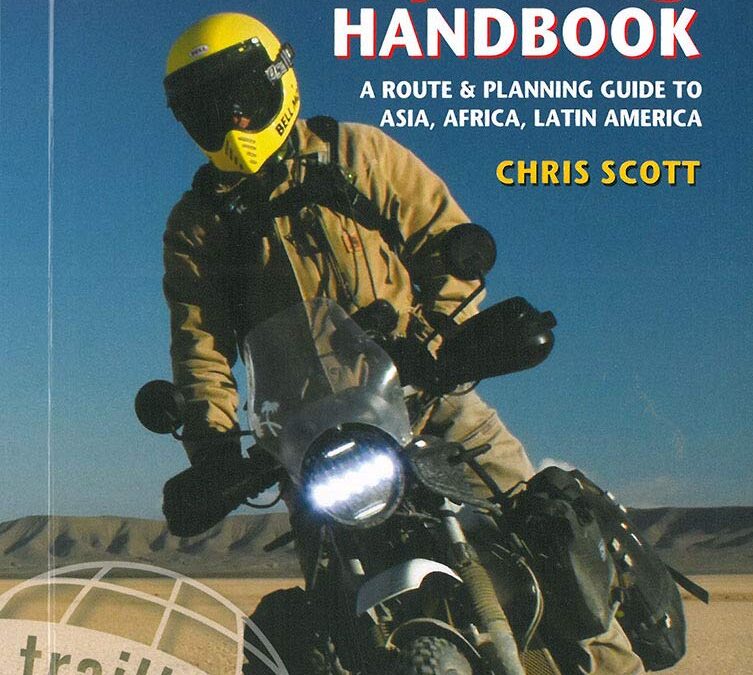
‘The first thing we did was buy Chris Scott’s ‘Adventure Motorcycling Handbook’ Ewan McGregor, The Long Way Round
In print since 1991 and now in full color, the eighth edition of the Adventure Motorcycling Handbook remains the legendary travel bible for two-wheeled adventurers. Dreaming of taking on the Big Trip? From Kathmandu to Machu Picchu or Mongolia to Patagonia (via Tanzania), AMH8 tells you everything you need to know on how to ride Africa, Asia and Latin America, aka: the Adventure Motorcycling Zone (AMZ). With 448-fact-filled pages including contributions from a team of earth roaming, overlanding experts. When, where and how, essential documentation, two dozen travel bikes rated, pages and pages on adapting and equipping your bike plus Life on the Road: borders, visas, money changing, air freight or shipping, comms and trackers, police trouble, mapping and navigation, off-road riding, troubleshooting and repairs, medical emergencies, wild camping and gear. Trans-Continental Route Outlines give you an idea of the best way to traverse the AMZ; which borders, fuel costs, where to get visas and catch ferries and where not to go.
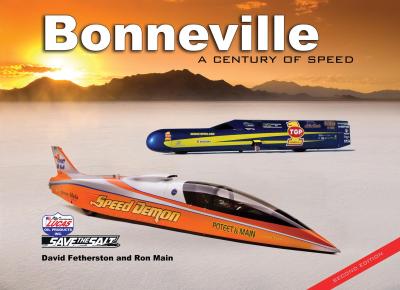
NEW 2nd Edition now available!
Includes the whole 2014 season plus 26 extra pages, more photos and updates!
Bonneville books are few and far between, but this new exhibition book by David Fetherston covers the collective history of Bonneville racing in a massive 302 page layout.
Created to celebrate 100 years of Bonneville racing the book starts at the root of land speed racing in 1898 in France and quickly moves to America with a brief the Florida Speed Trials and to the first known racing on the lake in 1914, onward to the 2013 season.
It’s filled with grand images of the great Bonneville champions including Mickey Thompson, Donald Campbell, John Cobb, Ab Jenkins, the Burke family, the Latin’s, the Lindsley’s, Les Leggitt, Al Teague, Scott Guthrie and many others. The book will help you appreciate that the core of Bonneville is the greater land speed community who have raced on the lake all these years and you will close this book in awe at the wonderful historic collection LSR streamliners, the roadsters, the coupes, the production cars and the bikes displayed in its pages.
The impetus for the book came from Ron Main’s Bonneville – A Century of Speed exhibition at the Grand National Roadster Show in Pomona, California. January 2014
The book which features 600 photos including the majority of the cars in the exhibition, is a fundraiser for the Salt Lay-down Project with Save the Salt, and all income from the numbered edition of just 2,000 copies goes directly to the fund.
”
Autobooks-Aerobooks 2900 W. Magnolia Blvd. Burbank, CA 91505 (818) 845-0707 Hours: Tuesday-Friday 10:00 AM – 6:00 PM Saturday 10:00 AM – 6:00 PM Closed Sunday and Monday Accept Credit Cards gift cardYES, We have Gift Cards - Click Here AUTOBOOKS IS OPEN...












